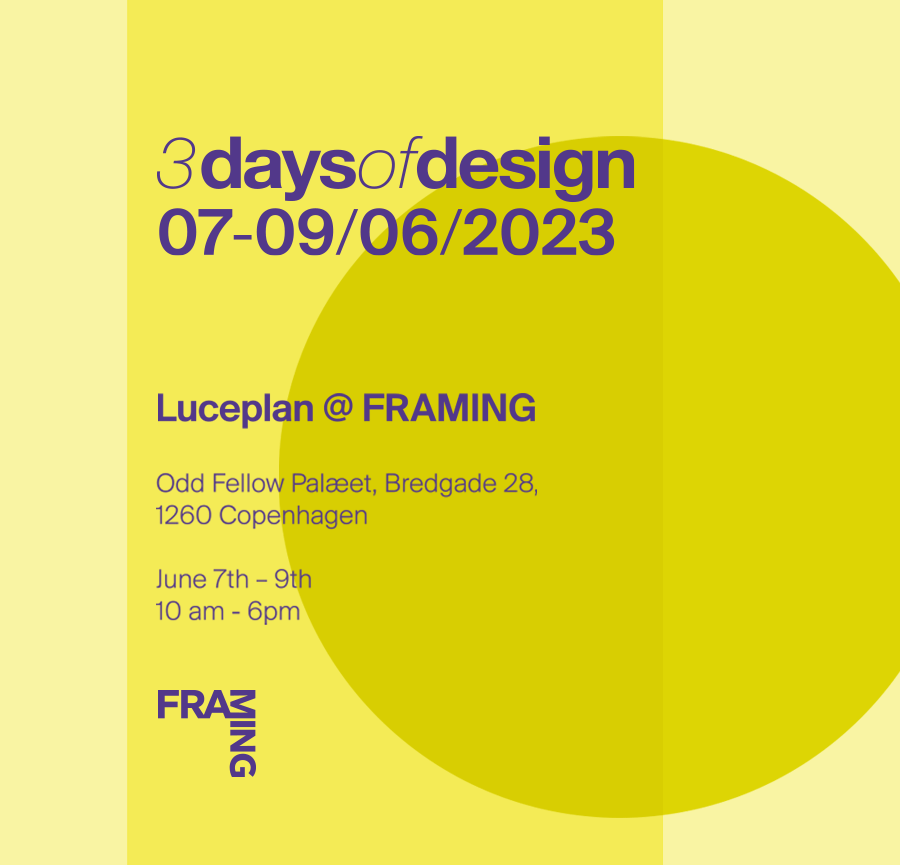News and events

May 31, 2023
3 days of design 2023
Luceplan takes again part to FRAMING, the collective design exhibition organized at The Odd Fellow Palace during 3daysofdesign, currently running in Copenhagen from 7th until 9th June 2023, which celebrates its 10th anniversary this year. A 3 days event when the 18th century historical building becomes the theatre to display innovative design projects and beyond.
Within the evocative environment of the location, Luceplan presents a selection of new products designed by Zsuzsanna Horvath, Mandalaki Studio, Meneghello Paolelli, Daniel Rybakken, Marco Spatti, Studio Shulab and Alessandro Zambelli.
FRAMING
Odd Fellow Palæet, Bredgade 28,
1260 Copenhagen
giugno 7 – 9
10 – 18